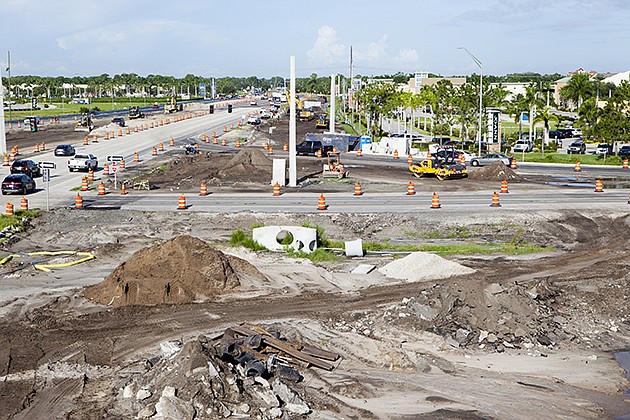Getting around, from Tampa to Naples, was a hot topic in 2016, and that promises to continue into 2017, with more new residents moving into the region.
The Business Observer spoke with officials across the region about transportation and traffic priorities for 2017 — and any obstacles they expect to encounter along the way.
FORT MYERS/NAPLES
Don Scott
Executive director |
Lee County Metropolitan Planning Organization
Goals for 2017 include:
The MPO's main focus will be on maintenance of existing facilities and replacement of a bridge.
The MPO is nearing the end of a study on roundabouts. Roundabouts not only keep traffic moving, says Scott, but can also be safer than traditional intersections. A new roundabout's cost can range from $400,000 to $1 million to design and construct, but a municipality can actually save money because traffic signals are also costly and require a lot of maintenance, he adds.
Determining what projects could be shovel-ready if a trillion-dollar infrastructure package comes through.
Challenges:
“Traffic volumes are growing more than the population is growing,” Scott says.
Funding. The county has a number of bridges built in the 1960s that now require maintenance. “Being able to fund things as quick as people want them” remains a hot topic of conversation, Scott says. There have been discussions about a sales tax or other growth-increment funding, but that's several years out at this point.
SARASOTA/MANATEE
Dave Hutchinson
Executive director |
Sarasota/Manatee Metropolitan Planning Organization
Goals for 2017 include:
The Sarasota/Manatee MPO's top goal for 2017 is to updating its “project prioritization criteria in order to begin compliance with new federal requirements,” Hutchinson says. That includes working on better performance measures.
The MPO will also look at continued improvements to Interstate 75, “our lifeline to the rest of the country,” Hutchinson says. The diverging diamond at the intersection of I-75 and University Parkway was pegged to be complete in August, but could be up and running as soon as May or June.
Hutchinson plans to continue to watch trial runs from private water taxi services in Tampa to determine what could make sense locally.
Challenges:
The agency will continue to evaluate its barrier island study in 2017, to look for potential solutions for congestion on and off barrier islands. “There aren't any easy fixes for those type of problems,” Hutchinson says. Though it might help with congestion for an hour or two of the day, the neighborhood may not like the proposed solutions.
“Gas taxes have not kept up with the cost of building transportation projects,” Hutchinson says. “We haven't seen an interest in paying for infrastructure needs, which puts pressure on us to find new ways to get around.”
“We are a fast growing state. As long as we continue to use old funding formulas, we're at a disadvantage,” Hutchinson says. He predicts individual areas will start to look at local funding options, such as a bond measure in Venice, which was recently approved to resurface roads.
TAMPA/ST. PETERSBURG
Beth Alden
Executive director |
Hillsborough Metropolitan Planning Organization
Goals for 2017 include:
Vision Zero, a national initiative for zero traffic fatalities going on in a number of metropolitan areas, including Washington, D.C., Seattle, New York City and Fort Lauderdale. Hillsborough County decided to work on Vision Zero after a citizen advocate group, Walk Bike Tampa, brought to its attention that in 2015 there was a record number of walking fatalities in Hillsborough County, and in 2016 there was a record number of cyclists killed on the road. More than 170 traffic-related deaths were reported in 2016 in Hillsborough County.
The Hillsborough MPO is also leading the effort in looking at regional planning and how MPOs could be structured differently. Nationwide, many MPOs serve up to 5 million to 6 million people, or may cross up to 20 counties. The way Florida was urbanized, Alden says, made for the case for MPOs to be developed in each county. “We may be outgrowing that model,” she says.
Hillsborough County is co-hosting workshops for eight county transit agencies in the spring to look at changes like consolidation.
Challenges:
People want to know if the goal of regional planning is to come up with a new organization or a new project. The real question that needs to be answered is, “Does the organization structure have an effect on our ability to get projects done?” Alden says.
“There's a lot of frustration here with the lack of rapid transit,” Alden says. “How do we take it to the next step?”To accomplish something like this, counties need to work together on initiatives, like how central Florida's SunRail project was funded by three counties.






